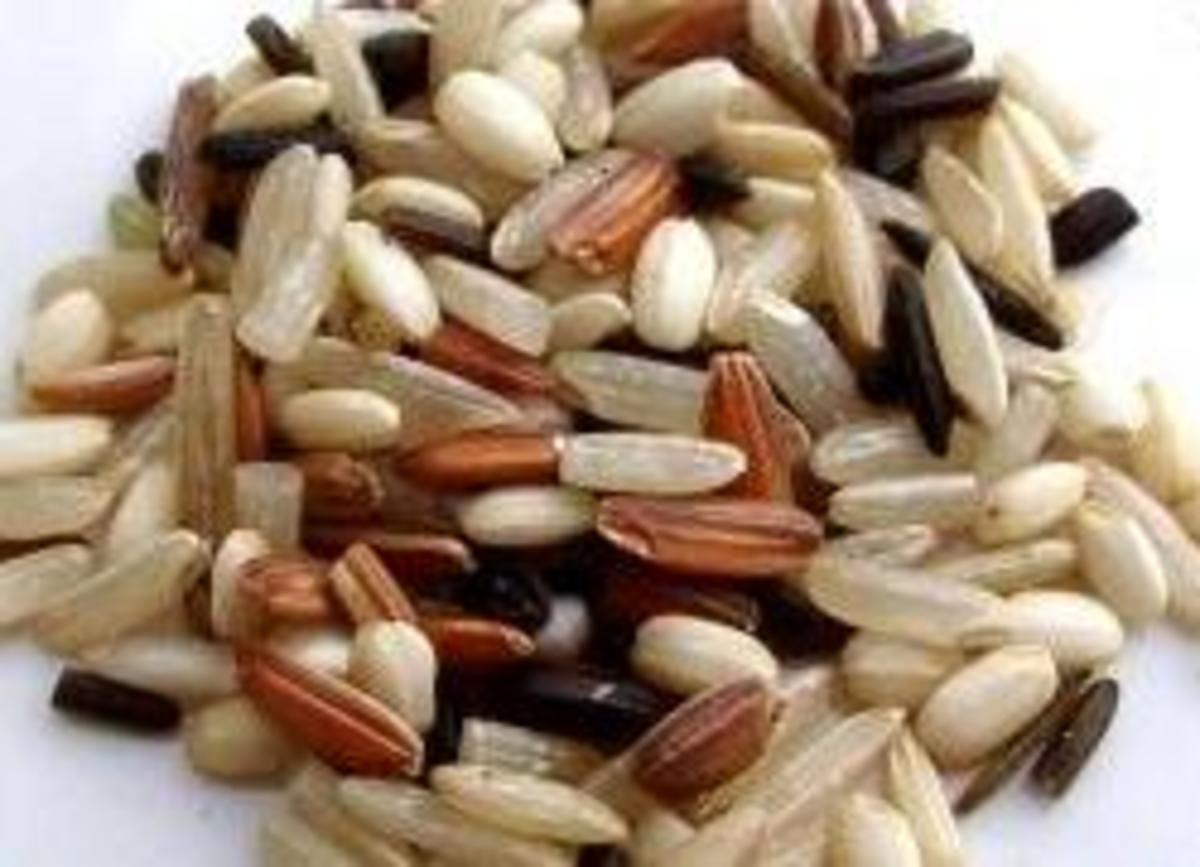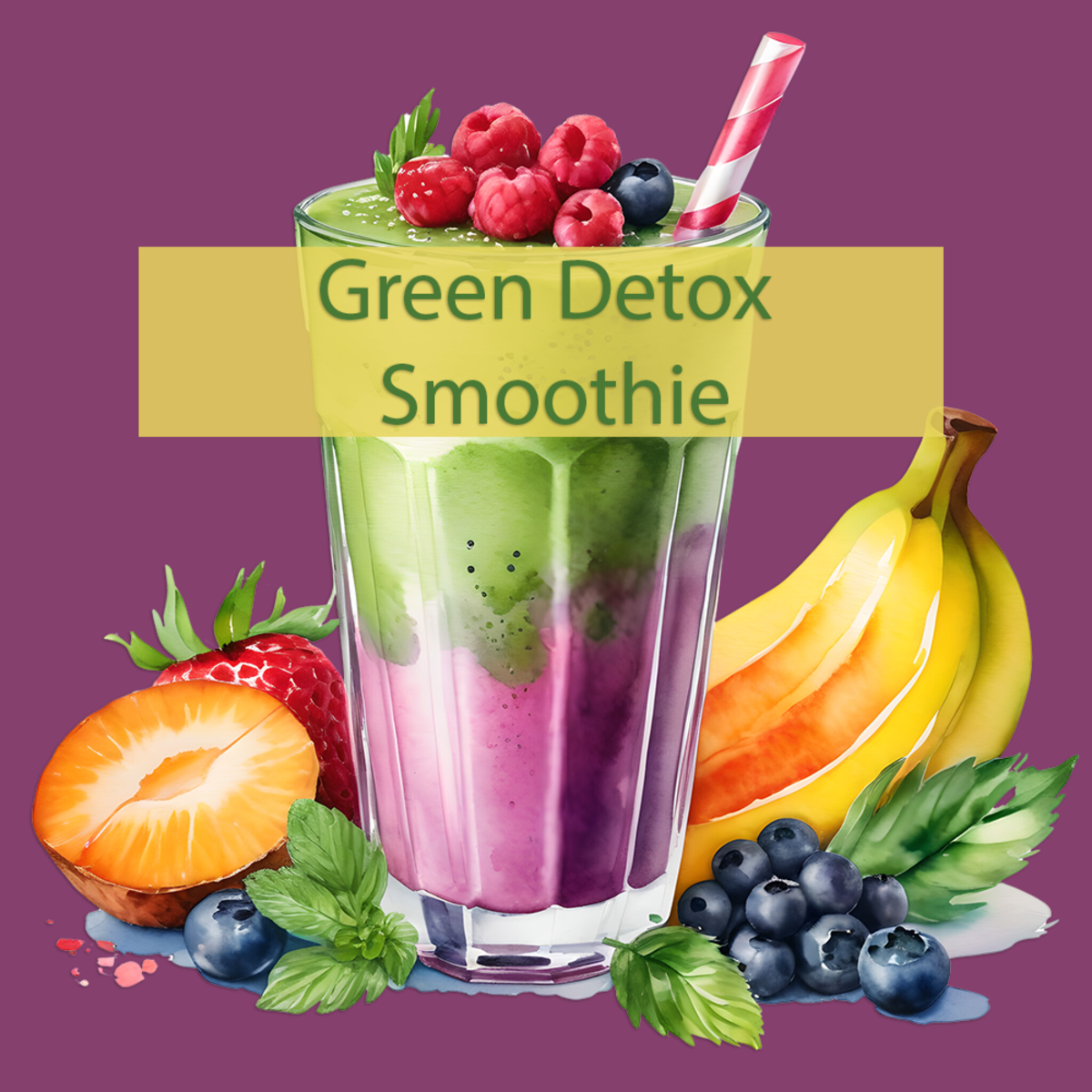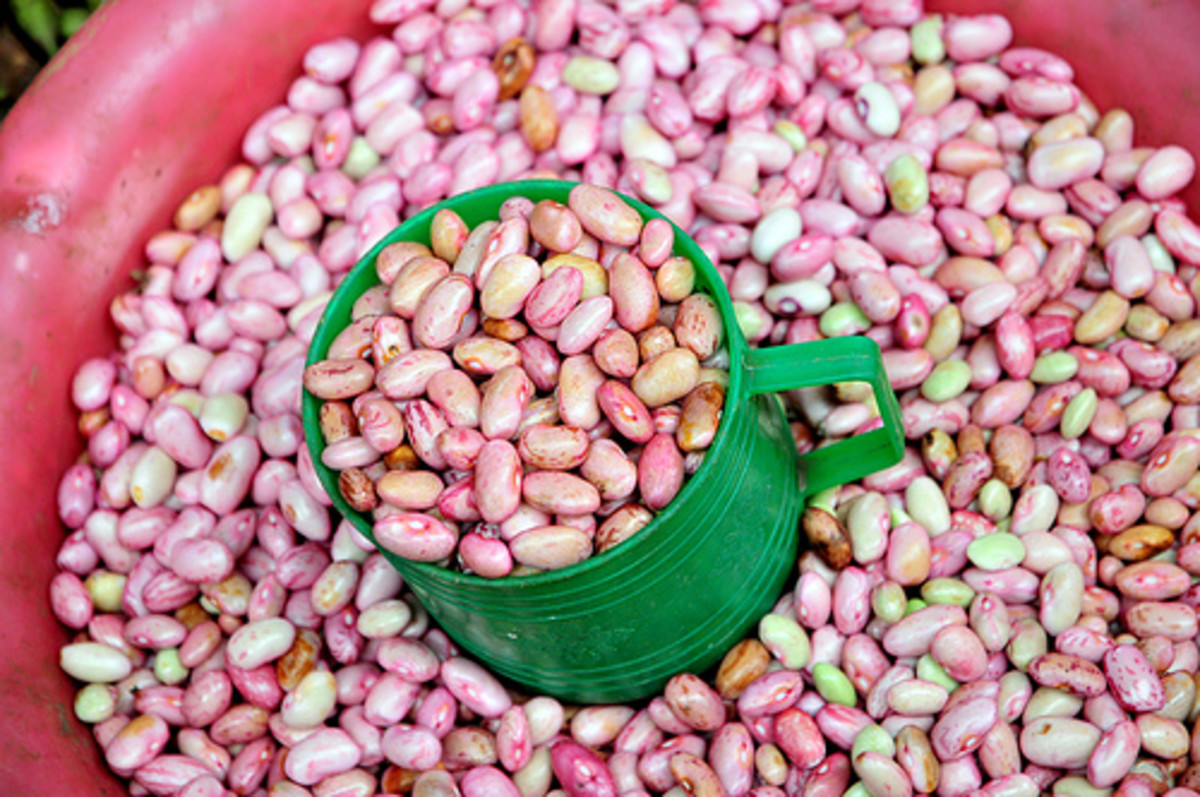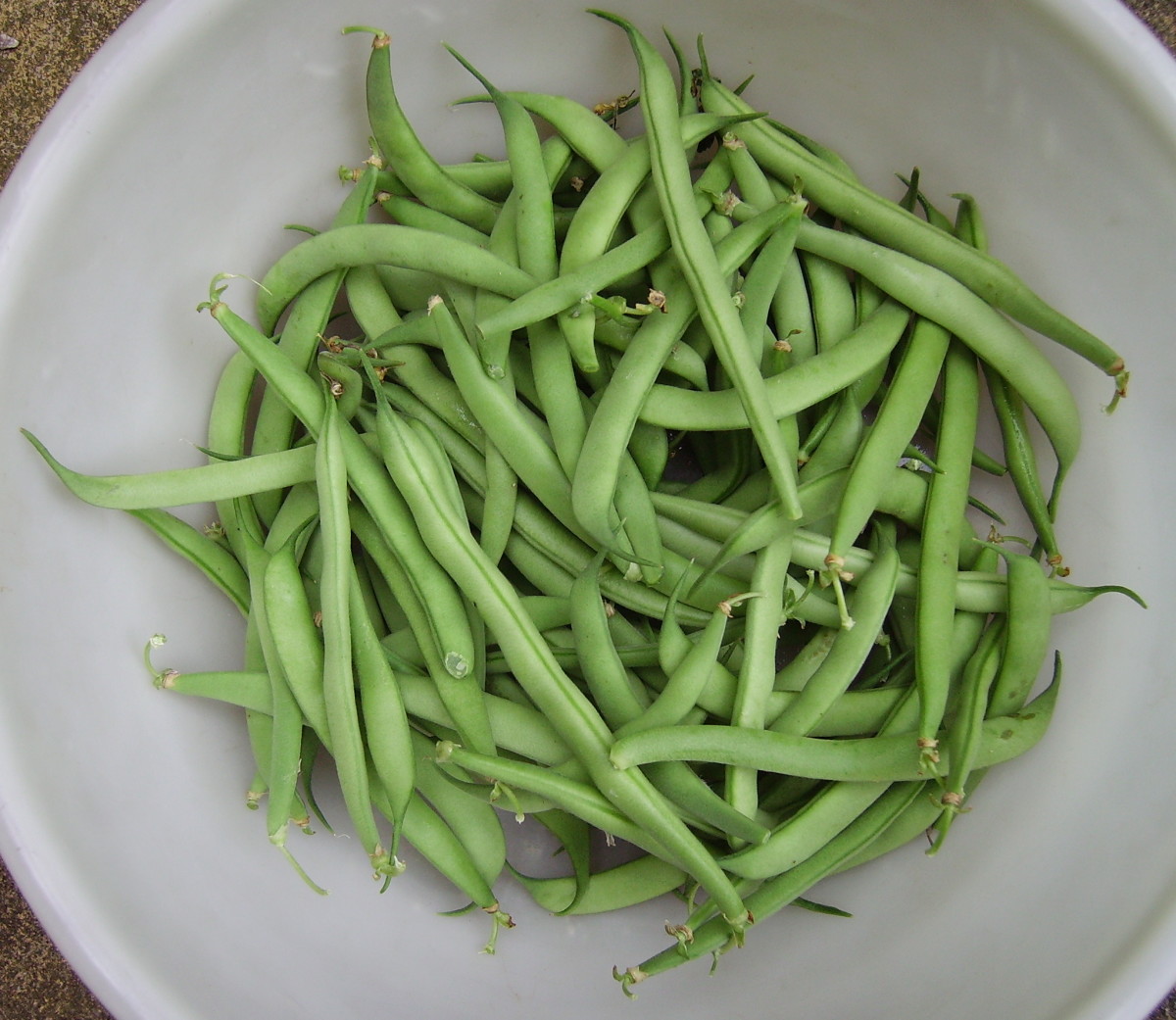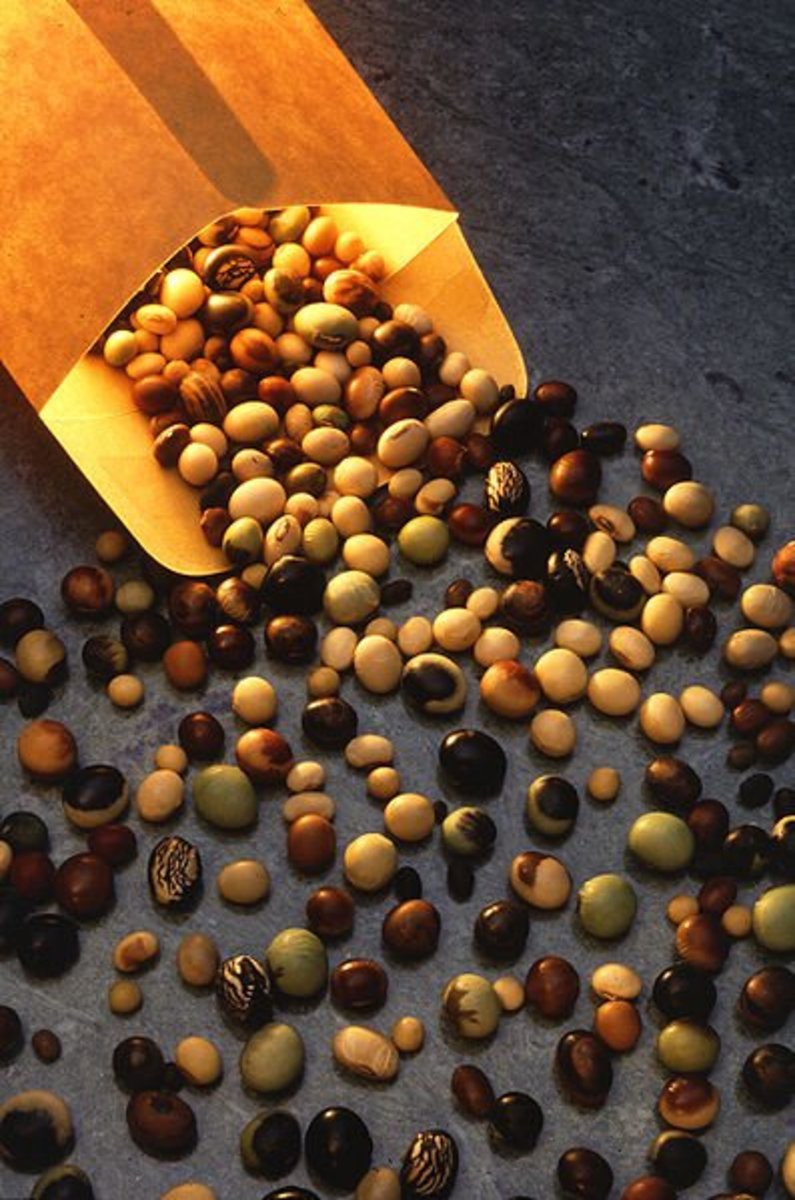- HubPages»
- Food and Cooking»
- Cooking Ingredients»
- Vegetable Ingredients
What You Need To Know About Lentils - Red, Green, Brown and Other Types of Lentils
Lentils: Healthy, Protein & Fiber-Rich Flavorful Food
Lentils, also called masoor which belong to the Lens culinaris specie, is a type of pulse more popularly known as the cousin of the beans. It is a bushy annual plant of the legume family that contain lens-shaped seeds which usually gives a rich nutty flavor. They are generally grown in pods with two seeds each and have different varieties that can be classified according to its size, color, shape and appearance.
Generally, lentils measure about ¼ of an inch in diameter, but there are also lentils that are small or medium sized as well as round or oval shaped. Some are colored red or red-orange, yellow, green, black or brown. However, it is mostly where lentils are grown and how they are processed that has lead to changes in their size, color and flavor.
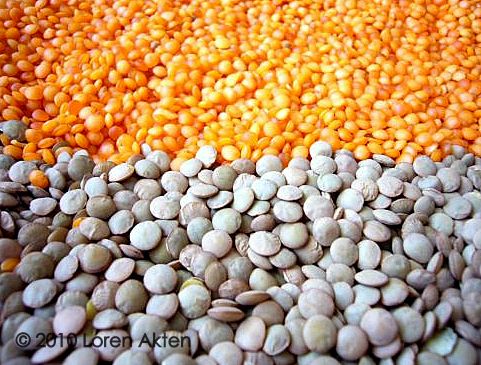
Types of Lentils
As mentioned above, there are many varieties of lentils grown and eaten all throughout the world. Listed below are its different types:
- Brown lentils, also known as the Spanish Pardina
- Black lentils, or Beluga (mostly black in color)
- Eston green, small green
- French green, also known as Puy or French lentils (dark speckled blue-green)
- Green lentils
- Laird, large green
- Petite Golden, Decorticated lentils
- Richlea, Medium green
- Macachiados, Big Mexican yellow lentils
- Masoor (Brown-skinned lentils which are red inside)
- Petite Crimson/Red Lentils (decorticated masoor lentils)
- Yellow, also called Tan lentils (colored red inside)
- Red Chief (decorticated yellow lentils)
Among all the different varieties of lentils, there are three most common types that are mostly used in cooking. They are the brown, red and green colored lentils.
Brown lentils, also known as continental lentils are more easily obtained and are less expensive. They have mild flavor and can easily retain their shape during and after cooking, but can also turn mushy when overcooked. The average cooking time for brown lentils is about 25-35 minutes.
Red lentils have a slightly sweeter taste compared to the brown ones and are less common. Compared to green lentils, red lentils also contain a lesser concentration of fiber. However, red lentils take lesser time to cook but can also easily turn mushy which makes this variety more suitable for cooking soups, purees and stews.
Green lentils, also known as Puy or French lentils are considered to be the finest among the types of lentils due to their meaty and very rich taste. One very good advantage of this type is that they mostly remain quite firm after cooking which makes them a very suitable choice for salads. These lentil type is originally grown in the volcanic soils of Puy, in France where it got its name. The are now also grown in North America and Italy and are considered to be the most most expensive among the other varieties. Mexican yellow lentils, Spanish pardina, yellow, eston green, and brown skinned-red lentils are among the easiest to find. The lesser common varieties are Beluga and white lentils. Beluga types are black in color and mostly glistens after they are cooked which makes them look like beluga caviar . White lentils (usually skinned) have a very smooth texture and are more suitable for stuffing or for making vegetable salads.
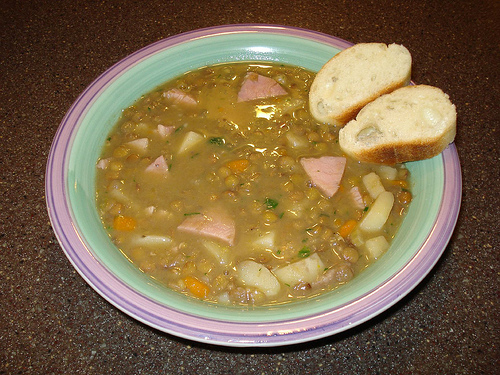
Health Benefits
Lentils may just look like small seeds yet they contain wonders of different vitamins and minerals which the body needs. Lentils contain very high levels of inexpensive protein which include the essential amino acids called Isoleucine and Lysine . They can also be a great choice of food for dieters as a ¼ cup serving of dry lentils only contain a modest 130 calories, with only a trace of fat but with no cholesterol or any sodium content. A whole cup of cooked lentils yields just about 230 calories in one serving. And the good news is that this small serving already provides 44 % of the Recommended Dietary Allowance (RDA) for dietary fiber and 90% for folate which makes lentils as one of the best food choices for a vegetarian diet.
Protein. Lentil is one of the best sources of an inexpensive protein-rich vegetarian diet. Sprouted lentils also contain sufficient levels of all essential amino acids, including methionine and cystine.
Fiber. Apart from having high levels of protein, lentils also contain sufficient levels of dietary fiber. They are also a very good source of cholesterol-lowering fiber as they do help in lowering cholesterol levels as well as in managing blood-sugar disorders. Their very high fiber content helps prevent blood sugar levels from rising rapidly after a meal.
Folate. Lentils contain more folate than any other fortified food which is considered to be one of the good foods especially for pregnant women and young, growing children.
B-vitamins and other essential minerals. Lentils also provide vitamin B1, and other essential minerals with no fat which are very healthy for the body.
Iron. Considered to be one of the best vegetable sources of iron, lentils can be very useful for preventing iron defiency related disorders. Iron is a very essential vitamin particularly to pregnant women as well as young, growing children and adolescents whose requirements for this vitamin are increased.
Calcium, carbohydrates, phosphorus, and vitamin A. Lentils also contain significant amounts of these vitamins and minerals. When lentils are eaten with foods high in vitamin C like tomatoes or red, green, and yellow bell peppers, their iron content is absorbed more efficiently by the body.
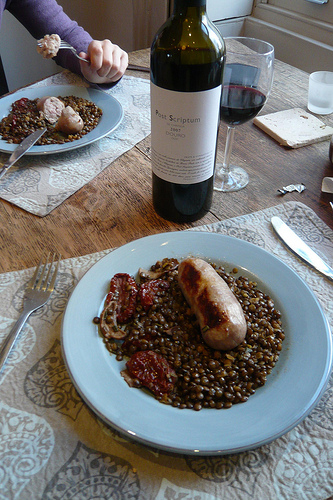
Common Uses of Lentils
Lentils are more commonly used in making soups and stews in every kitchen. Green and brown lentils are usually used as an additional ingredient in making salads or side dishes as they tend to hold their shape fairly well unless otherwise they are overcooked.
The other varieties such as the red lentils are more commonly used in soups, purees and to thicken stews as they easily become soft and mushy after cooking. The one good thing about lentils is that they generally don’t need to be soaked in water before cooking.
Compared to dry beans, lentils cook more faster even without soaking and most of its common varieties may even cook easily in just about a few minutes.

Healthy Cooking Made Easy - Check these out!
You Might Also Like:
- What You Need To Know About Turkish (Peynir) Cheeses
White cheese, called Beyaz Peynir in Turkish. (Photo by Loren Akten / Personal File) Turkey, a land known to have been home to many civilisations over thousands of years is not surprising to have a wide... - Healing Properties, Health Benefits and Other Medicinal Uses of Lemons
Rediscover the amazing therapeutic properties and health benefits of lemons. Lemons have long been recognized not just for their varied culinary uses but also for their medicinal healing properties. Yet... - How to Store and Serve Cheese at Home - Best Ways to Keep Cheese Fresh and Mold-Free
This article will give you some helpful advice and tips on how to properly store and serve your freshly bought cheese at home. Read on to find out the best ways to keep your cheese tasting good, fresh, and... - Healthy Foods for a Healthy Glowing Skin - InfoBarrel
- Patience Dock - Healing Properties and Other Health Benefits | factoidz
This article provides concrete facts and information about the healing properties and health benefits of patience dock plant.
Try These Easy & Healthy Lentil Recipes:
- Bean and Onion Salad with Health Benefits
Ingredients: 1/4 cup apple juice 1/2 medium size onion, chopped 1 red onion, sliced 2 medium size carrots, chopped 2 stalks celery, sliced 1/3 cup vinegar 1/2 cup water 1 T sugar ... - Peas, Lentils, and Chickpeas
Everyone knows beans are good for you: high in fiber, iron, and protein. But not everyone likes beans. They can be time consuming when cooked at home or high in sodium when bought in a can. Luckily there are...




